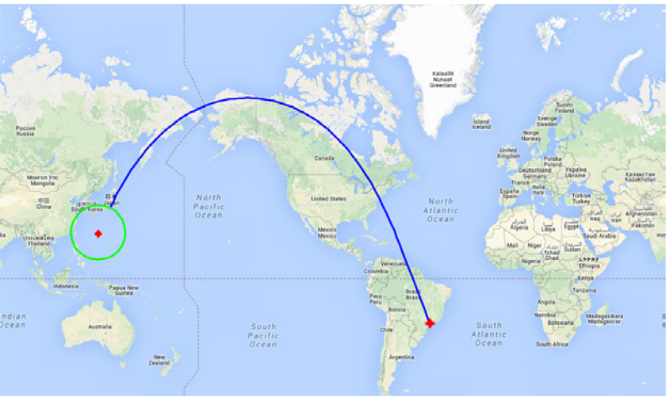SPHERICAL GEOMETRY

The shortest path between two points on a plane is a line segment. What is the shortest path between São Paulo and Tokyo?
Thinking of the Earth as a sphere, the answer to that question is a straight line segment of the sphere. But what we call "straight" in a sphere surface is quite different from the straight line in a plane: it is a maximum circle. For example, the equator line is a straight line on the sphere as well as any of the meridians.
Note that, given any two points on the sphere surface, there can be more than one straight line segment joining them. Think, for example, of the poles: all meridians are "straight lines" through these two points. It is also clear that two "straight lines" always intersect at two points and it becomes difficult to define the concept of “parallel lines” in this geometry.

An interesting curiosity: In the spherical geometry, the sum of the internal angles of a triangle is always greater than 180 degrees and less than 540 degrees.

